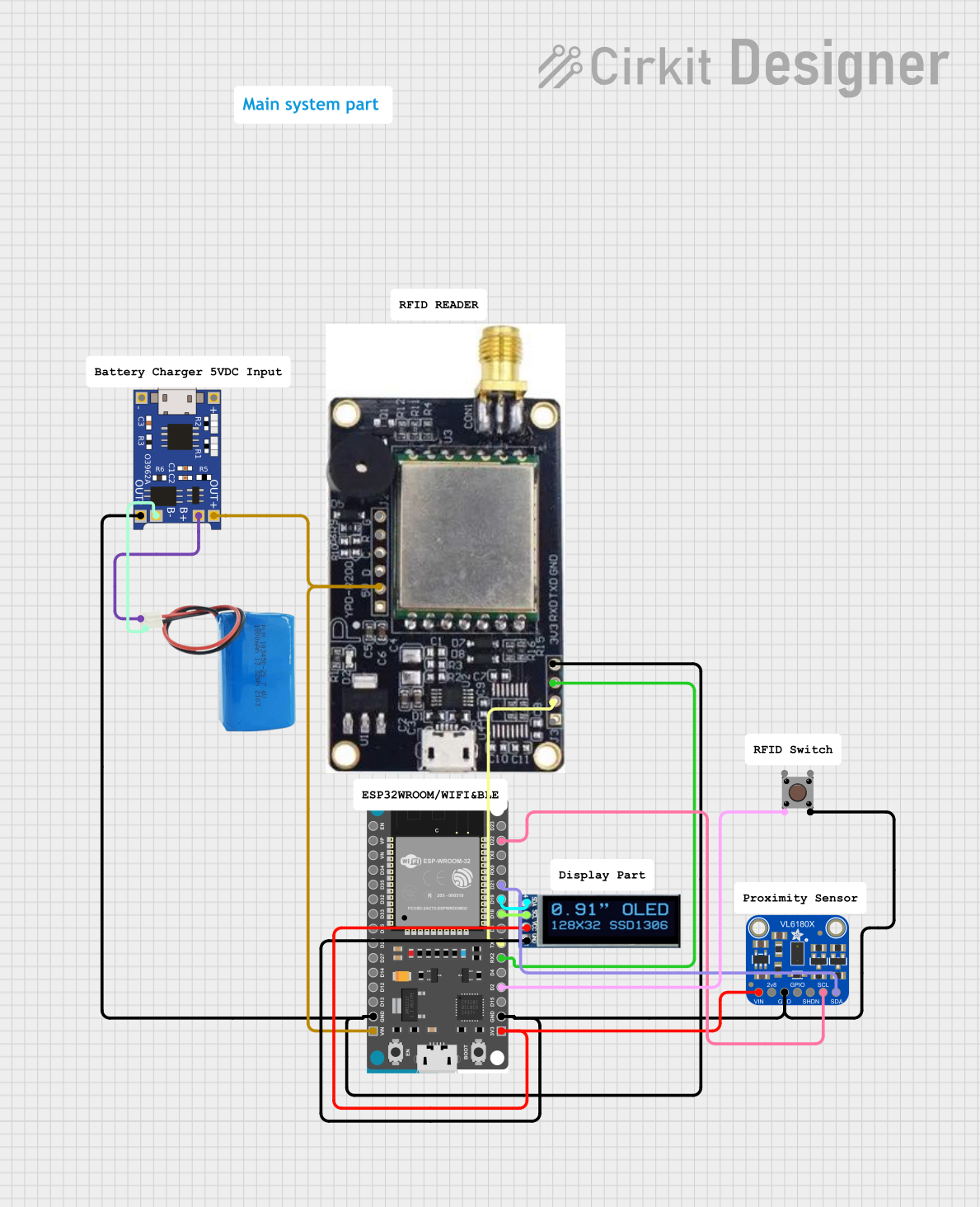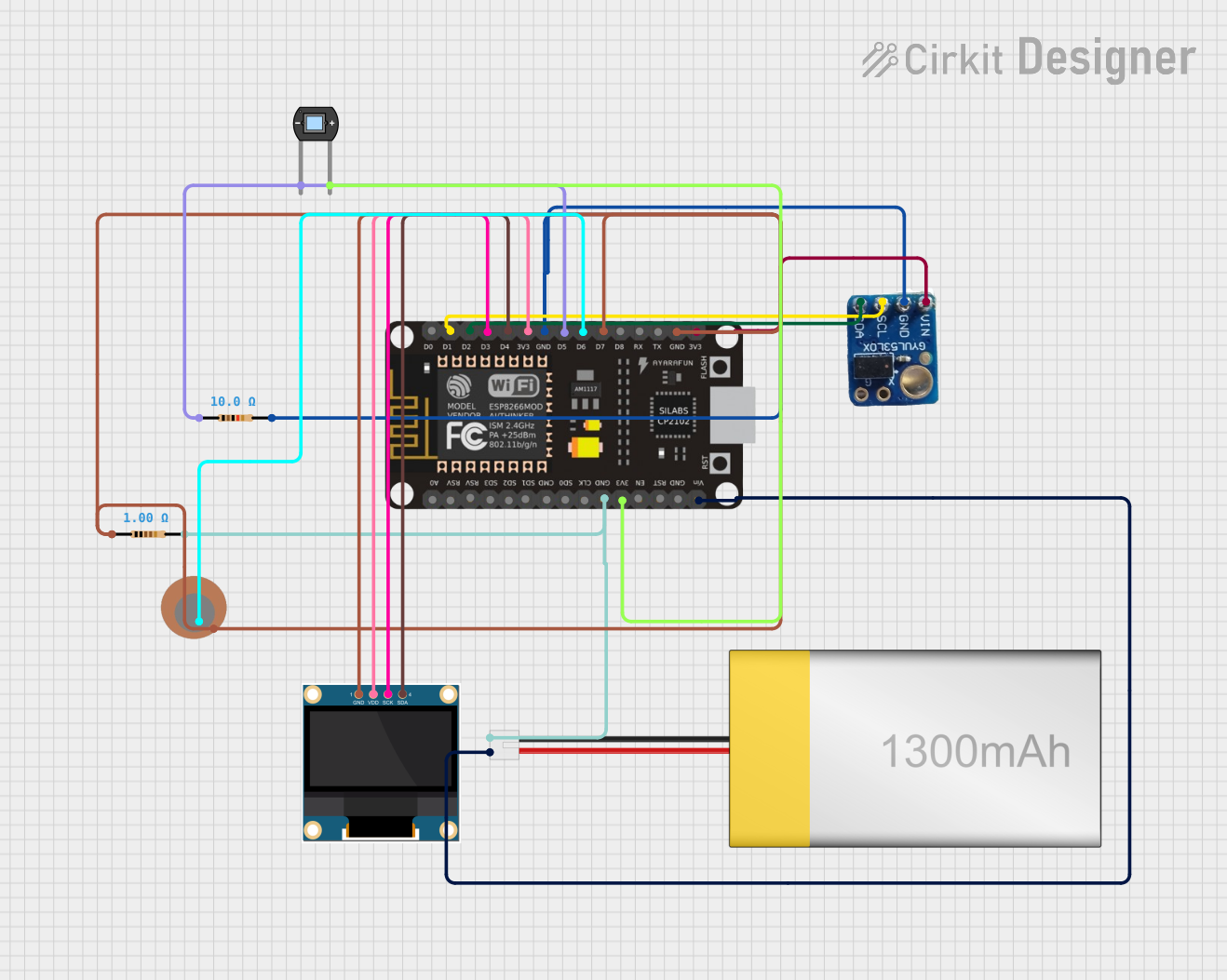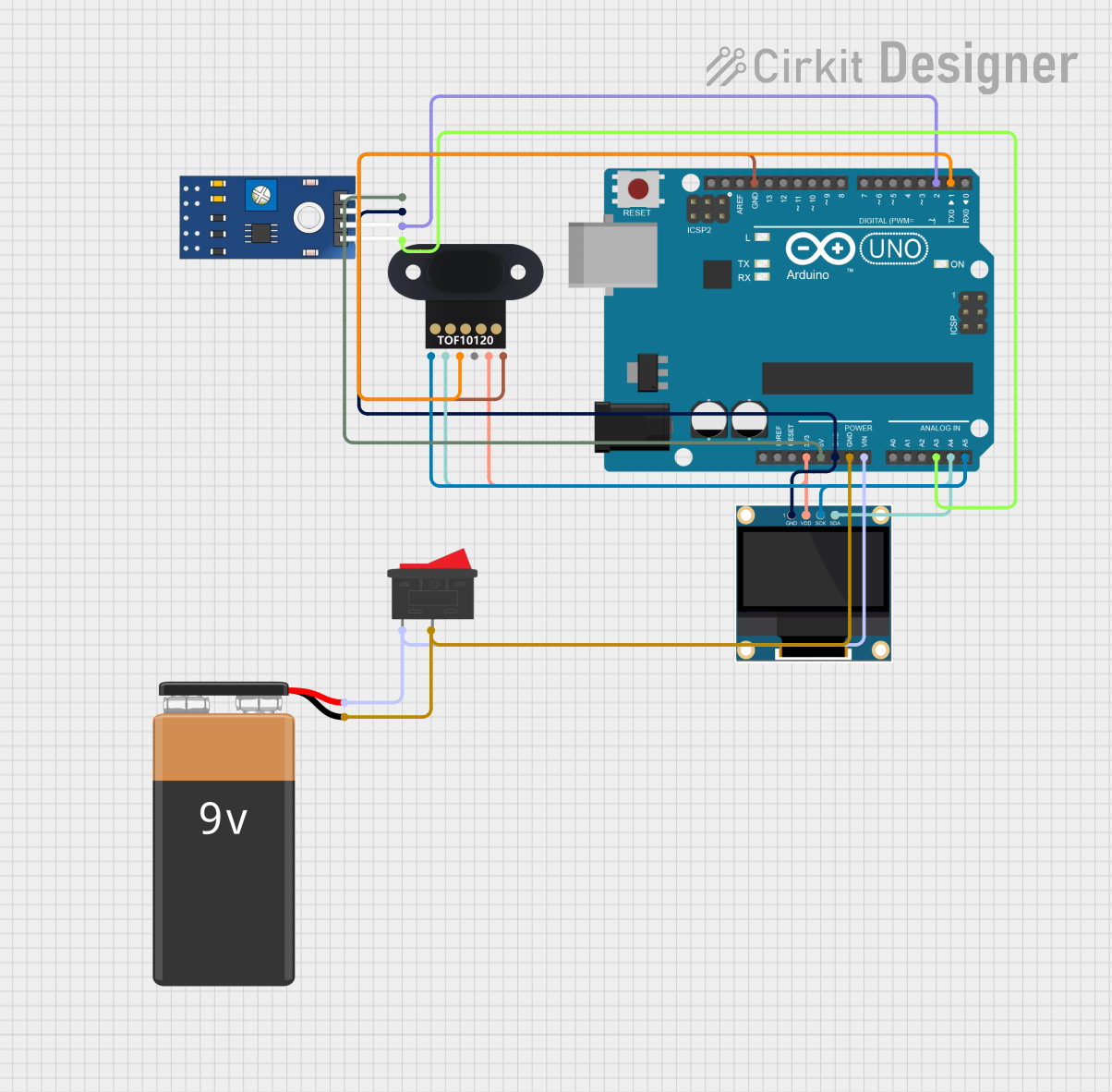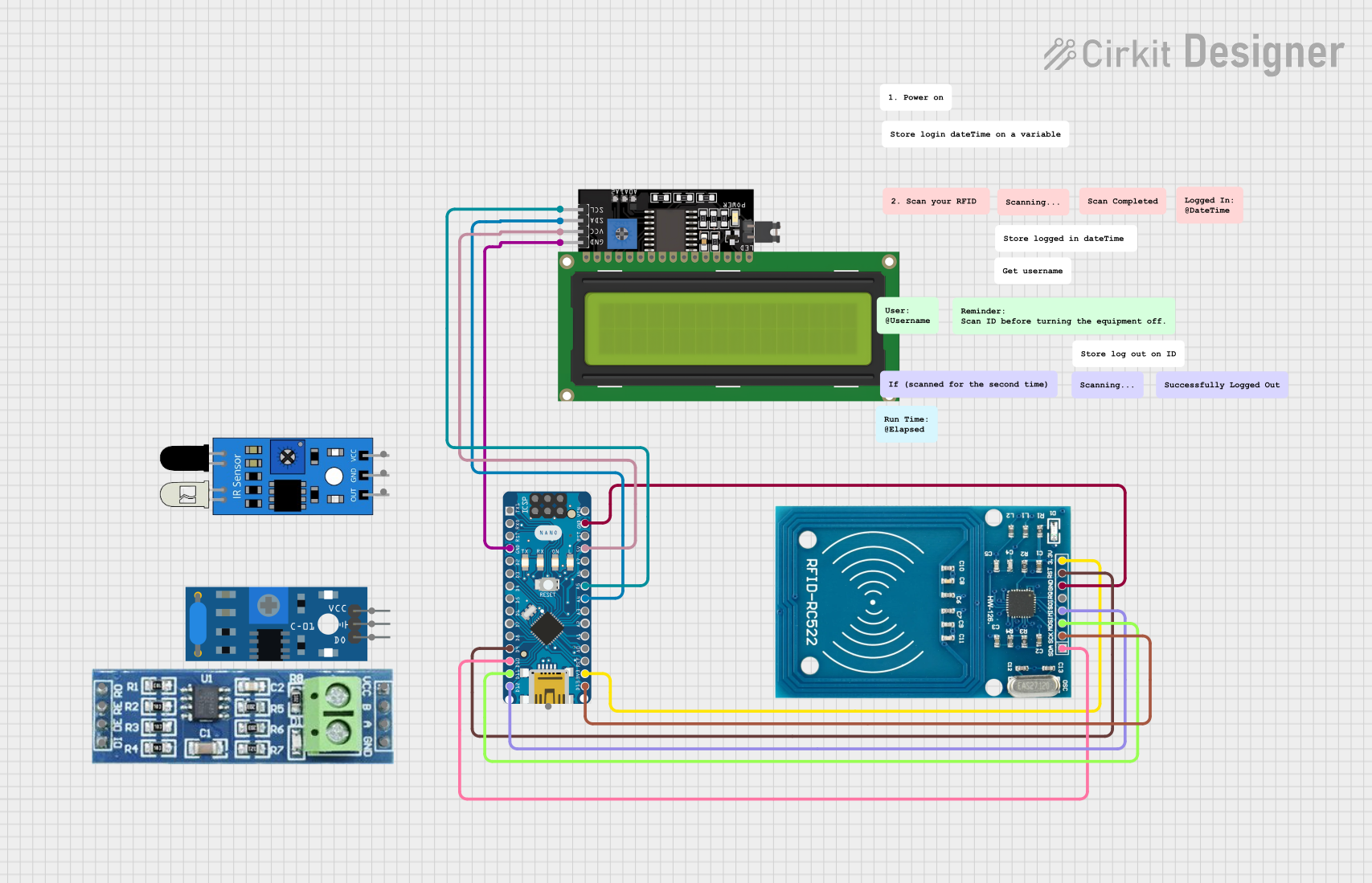
How to Use TOF(time of flight): Examples, Pinouts, and Specs

 Design with TOF(time of flight) in Cirkit Designer
Design with TOF(time of flight) in Cirkit DesignerIntroduction
A Time of Flight (TOF) sensor measures the time it takes for a signal, typically light or sound, to travel to an object and return to the sensor. This measurement allows the sensor to calculate the distance to the object with high precision. TOF sensors are widely used in applications requiring accurate distance measurement, object detection, and proximity sensing.
Explore Projects Built with TOF(time of flight)

 Open Project in Cirkit Designer
Open Project in Cirkit Designer
 Open Project in Cirkit Designer
Open Project in Cirkit Designer
 Open Project in Cirkit Designer
Open Project in Cirkit Designer
 Open Project in Cirkit Designer
Open Project in Cirkit DesignerExplore Projects Built with TOF(time of flight)

 Open Project in Cirkit Designer
Open Project in Cirkit Designer
 Open Project in Cirkit Designer
Open Project in Cirkit Designer
 Open Project in Cirkit Designer
Open Project in Cirkit Designer
 Open Project in Cirkit Designer
Open Project in Cirkit DesignerCommon Applications and Use Cases
- Robotics for obstacle detection and navigation
- Gesture recognition in consumer electronics
- Autonomous vehicles for collision avoidance
- Industrial automation for object positioning
- Smart home devices, such as touchless switches and presence detection
Technical Specifications
Below are the general technical specifications for a typical TOF sensor (e.g., VL53L0X):
| Parameter | Value |
|---|---|
| Operating Voltage | 2.6V to 3.5V |
| Communication Interface | I2C |
| Measurement Range | 30mm to 2000mm (2 meters) |
| Accuracy | ±3% (depending on conditions) |
| Field of View (FOV) | 25° |
| Operating Temperature | -20°C to 70°C |
| Power Consumption | ~20mW (active mode) |
Pin Configuration and Descriptions
| Pin Name | Pin Number | Description |
|---|---|---|
| VIN | 1 | Power supply input (2.6V to 3.5V) |
| GND | 2 | Ground |
| SDA | 3 | I2C data line |
| SCL | 4 | I2C clock line |
| XSHUT | 5 | Shutdown pin (active low, optional) |
| GPIO1 | 6 | Interrupt output (optional, configurable) |
Usage Instructions
How to Use the TOF Sensor in a Circuit
- Power the Sensor: Connect the VIN pin to a 3.3V power source and the GND pin to ground.
- I2C Communication: Connect the SDA and SCL pins to the corresponding I2C pins on your microcontroller (e.g., Arduino UNO).
- Optional Pins:
- Use the XSHUT pin to enable or disable the sensor programmatically.
- The GPIO1 pin can be configured as an interrupt for specific events.
- Pull-Up Resistors: Ensure that the SDA and SCL lines have pull-up resistors (typically 4.7kΩ) if not already present on the breakout board.
Important Considerations and Best Practices
- Ambient Light: Avoid placing the sensor in direct sunlight or near strong light sources, as this can interfere with measurements.
- Reflective Surfaces: Highly reflective or transparent objects may affect accuracy.
- Mounting: Ensure the sensor is mounted securely and aligned properly for accurate distance measurements.
- I2C Address: If using multiple TOF sensors, configure unique I2C addresses for each sensor.
Example Code for Arduino UNO
Below is an example of how to use a TOF sensor (e.g., VL53L0X) with an Arduino UNO:
#include <Wire.h>
#include <Adafruit_VL53L0X.h>
// Create an instance of the VL53L0X sensor
Adafruit_VL53L0X lox = Adafruit_VL53L0X();
void setup() {
Serial.begin(9600); // Initialize serial communication
while (!Serial) {
delay(10); // Wait for the serial port to connect
}
Serial.println("Initializing TOF Sensor...");
// Initialize the sensor
if (!lox.begin()) {
Serial.println("Failed to initialize VL53L0X. Check wiring!");
while (1); // Halt execution if initialization fails
}
Serial.println("VL53L0X Initialized Successfully!");
}
void loop() {
VL53L0X_RangingMeasurementData_t measure;
// Perform a distance measurement
lox.rangingTest(&measure, false);
// Check if the measurement is valid
if (measure.RangeStatus != 4) { // 4 indicates an out-of-range error
Serial.print("Distance: ");
Serial.print(measure.RangeMilliMeter);
Serial.println(" mm");
} else {
Serial.println("Out of range");
}
delay(100); // Wait 100ms before the next measurement
}
Troubleshooting and FAQs
Common Issues and Solutions
Sensor Not Detected on I2C Bus:
- Ensure the SDA and SCL connections are correct.
- Check for proper pull-up resistors on the I2C lines.
- Verify the sensor's I2C address matches the one in your code.
Inaccurate Measurements:
- Ensure the sensor is not obstructed or misaligned.
- Avoid using the sensor in environments with excessive ambient light or reflective surfaces.
Out-of-Range Errors:
- Ensure the object is within the sensor's measurement range (30mm to 2 meters).
- Check for any obstructions between the sensor and the object.
Sensor Not Powering On:
- Verify the VIN pin is receiving the correct voltage (2.6V to 3.5V).
- Check all connections for loose wires or poor soldering.
FAQs
Q: Can I use multiple TOF sensors on the same I2C bus?
A: Yes, but you must assign a unique I2C address to each sensor. This can be done by toggling the XSHUT pin and reinitializing each sensor with a different address.
Q: What is the maximum range of a TOF sensor?
A: The maximum range depends on the specific model. For the VL53L0X, the range is up to 2 meters under optimal conditions.
Q: Can the TOF sensor detect transparent objects?
A: Detection of transparent objects may be unreliable due to the way light is reflected and refracted.
Q: Is the TOF sensor affected by temperature changes?
A: Yes, extreme temperatures can affect accuracy. Ensure the sensor operates within its specified temperature range (-20°C to 70°C).